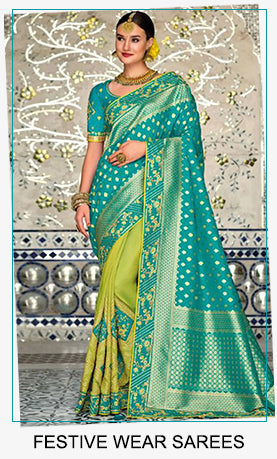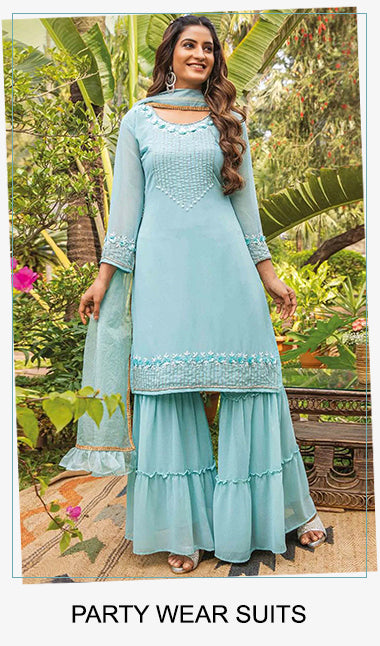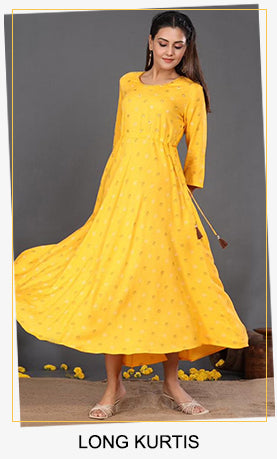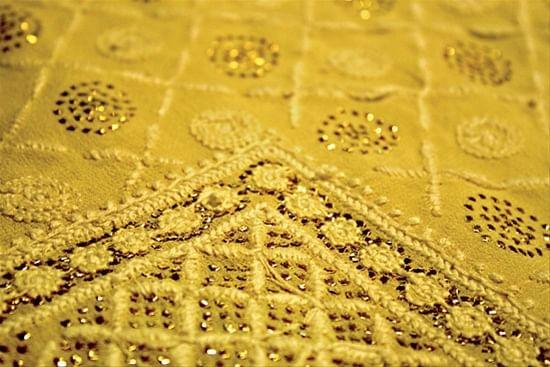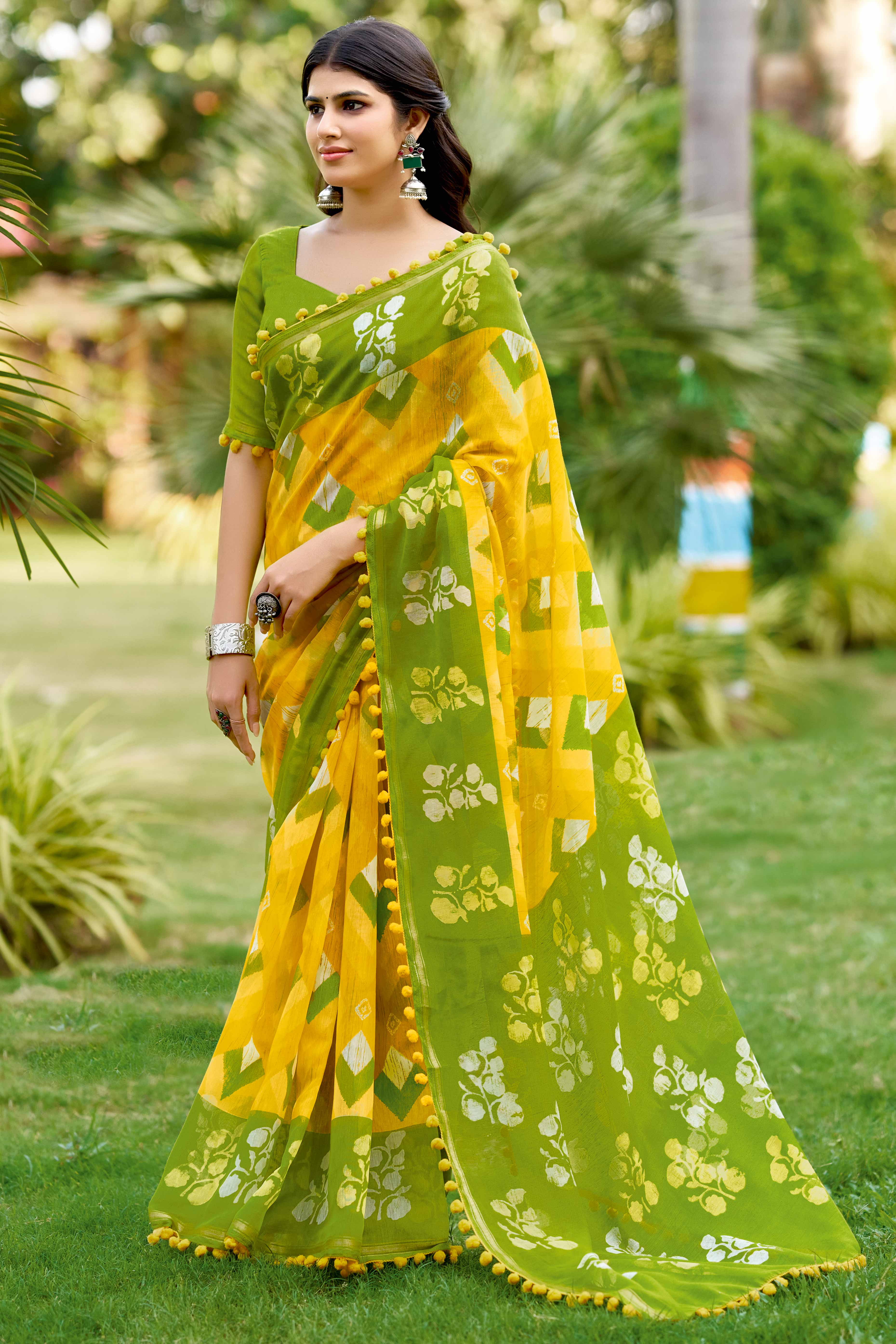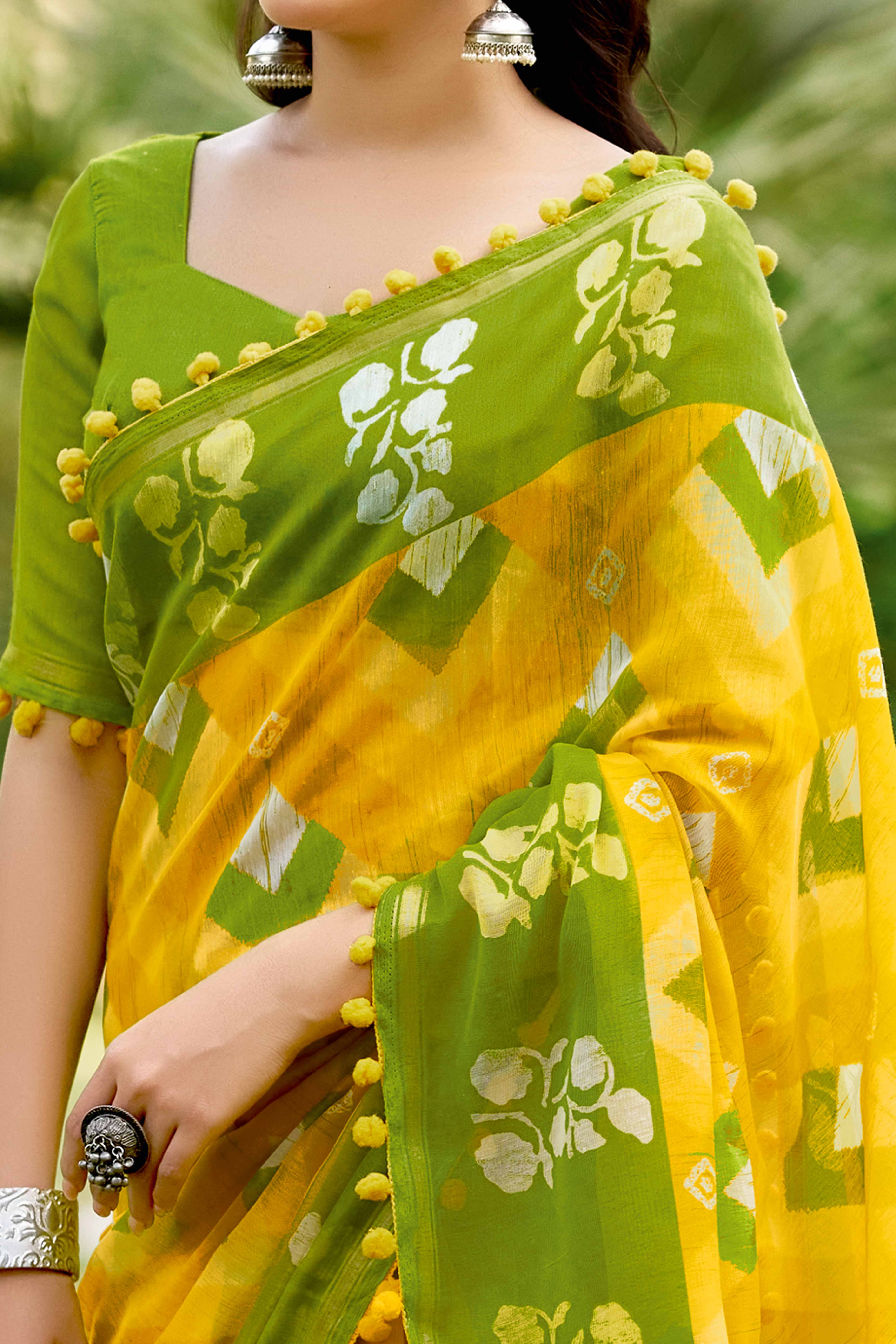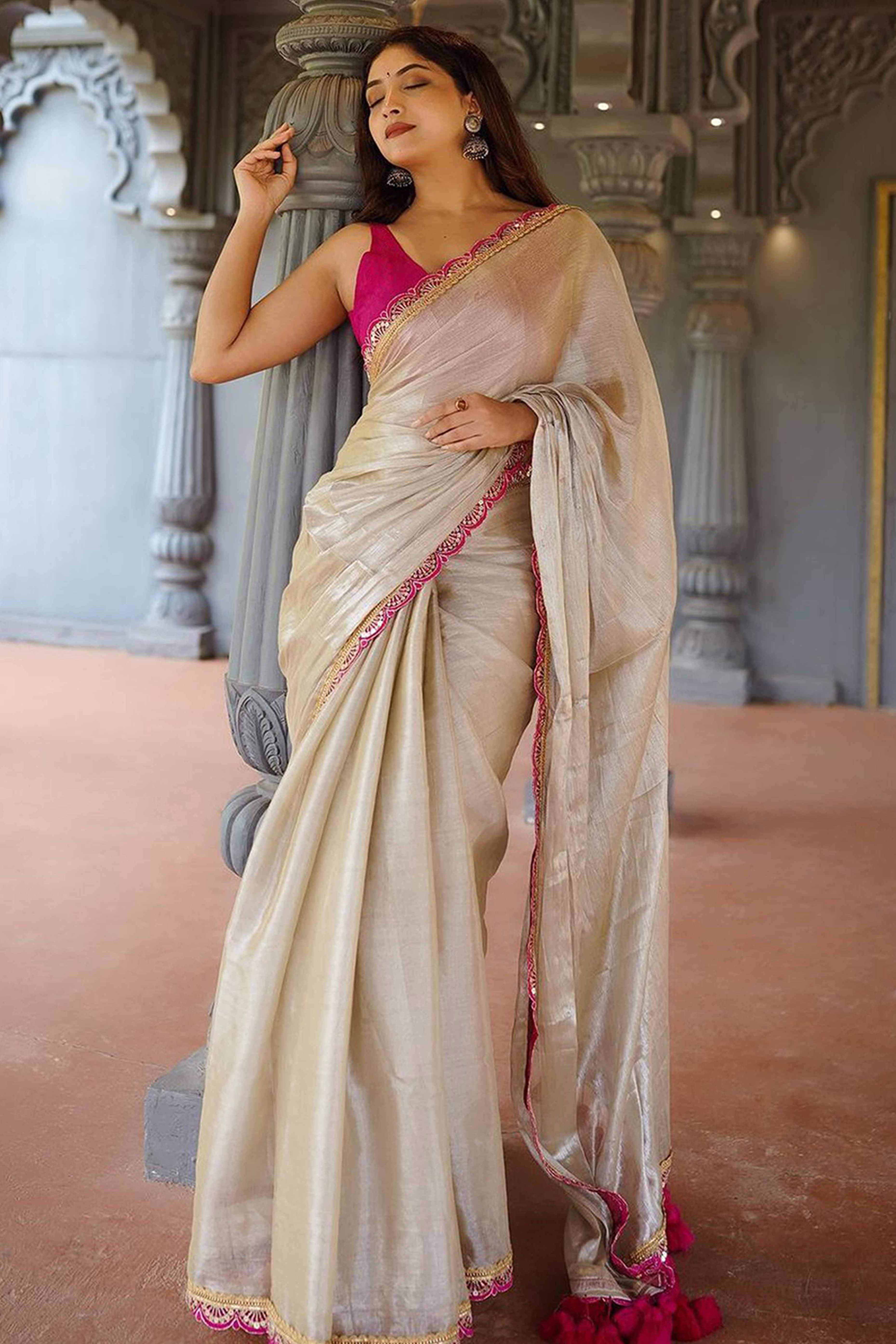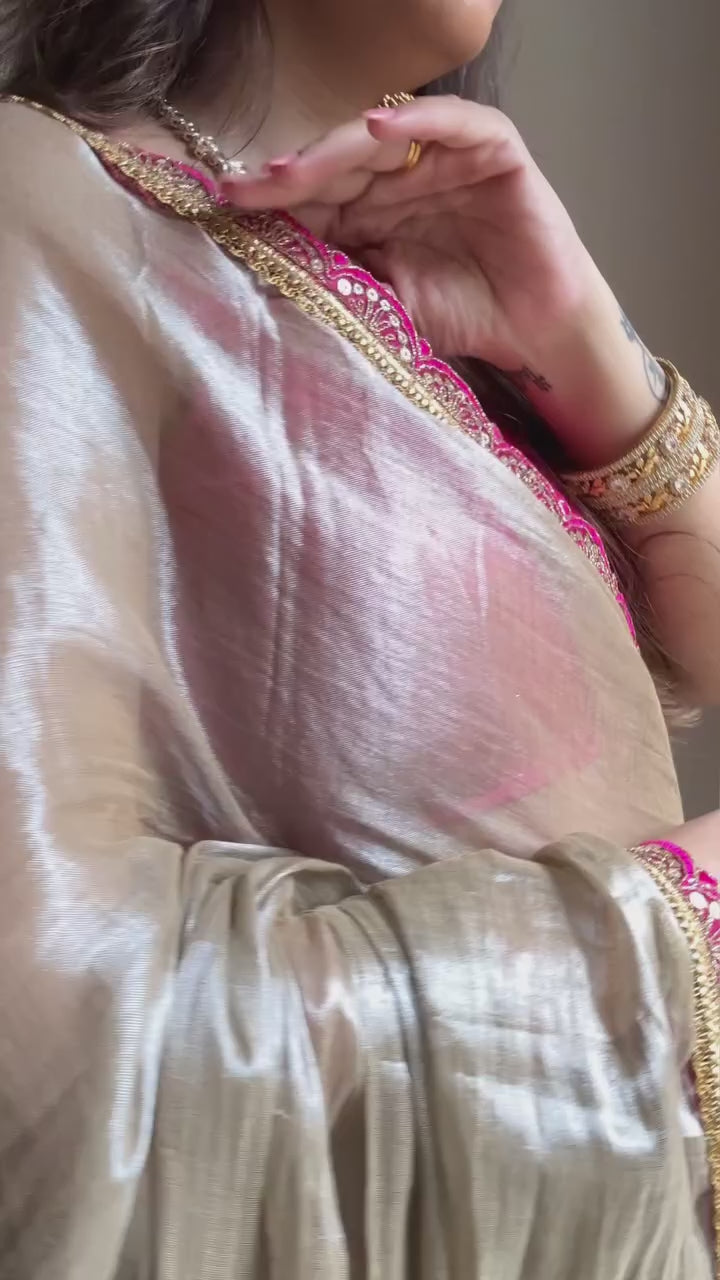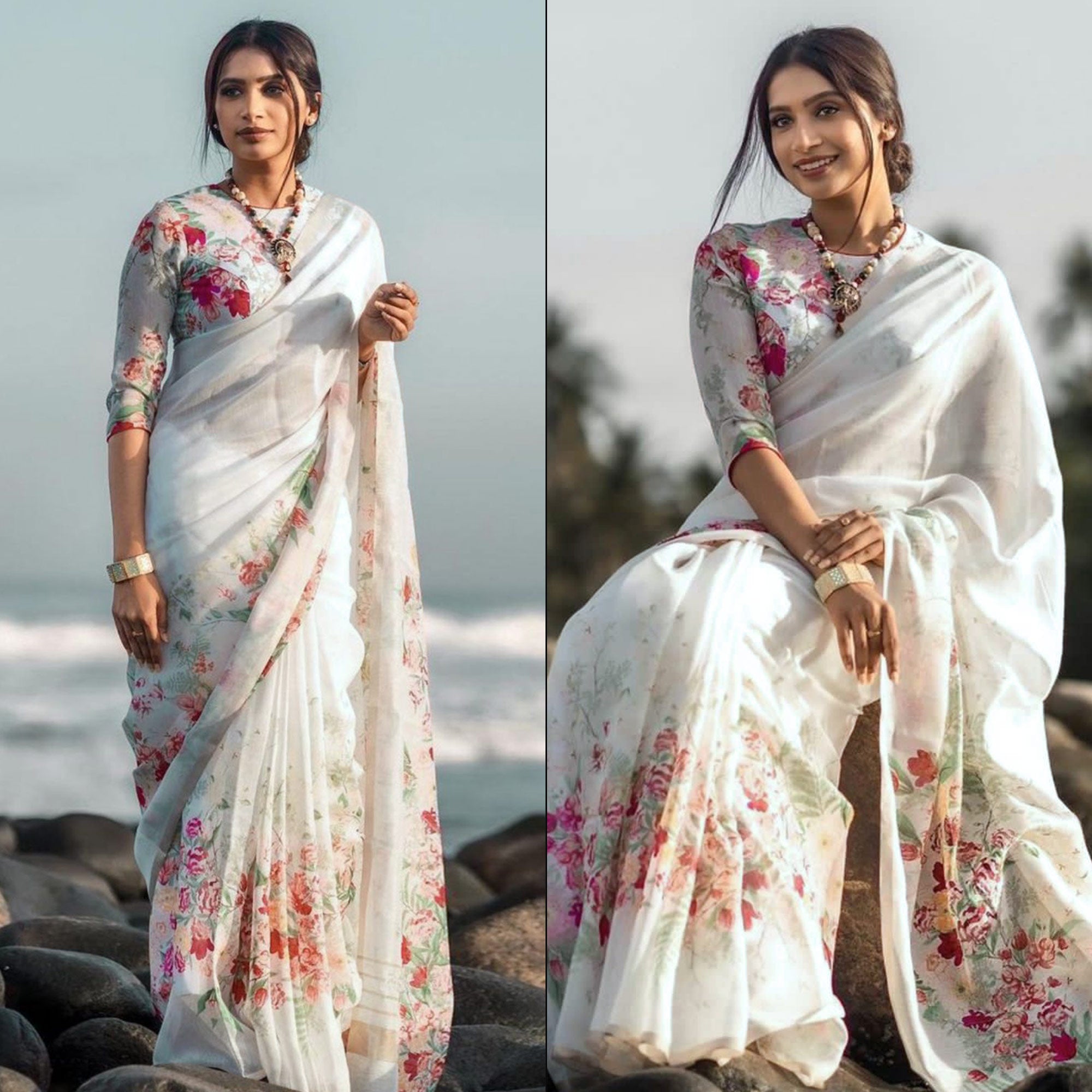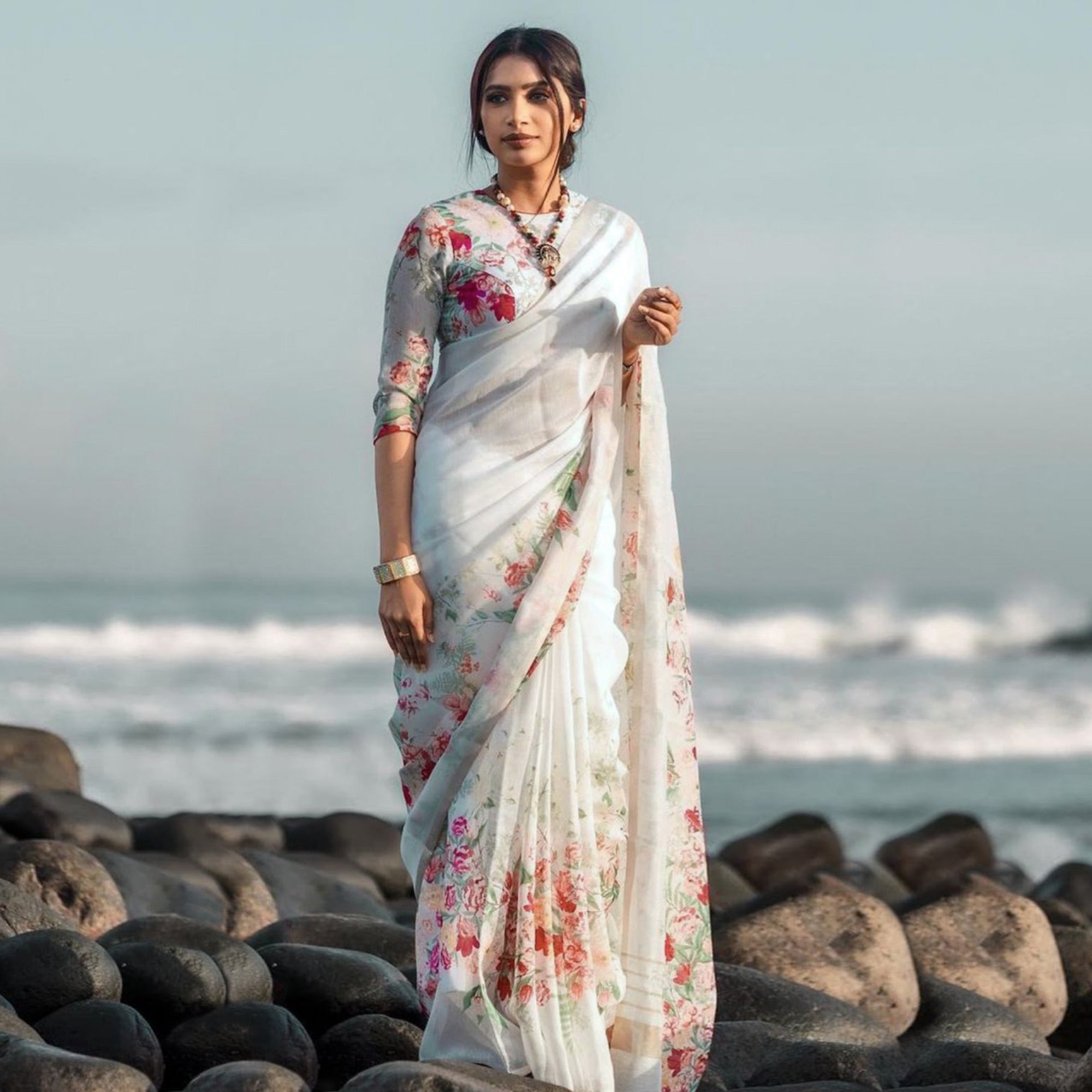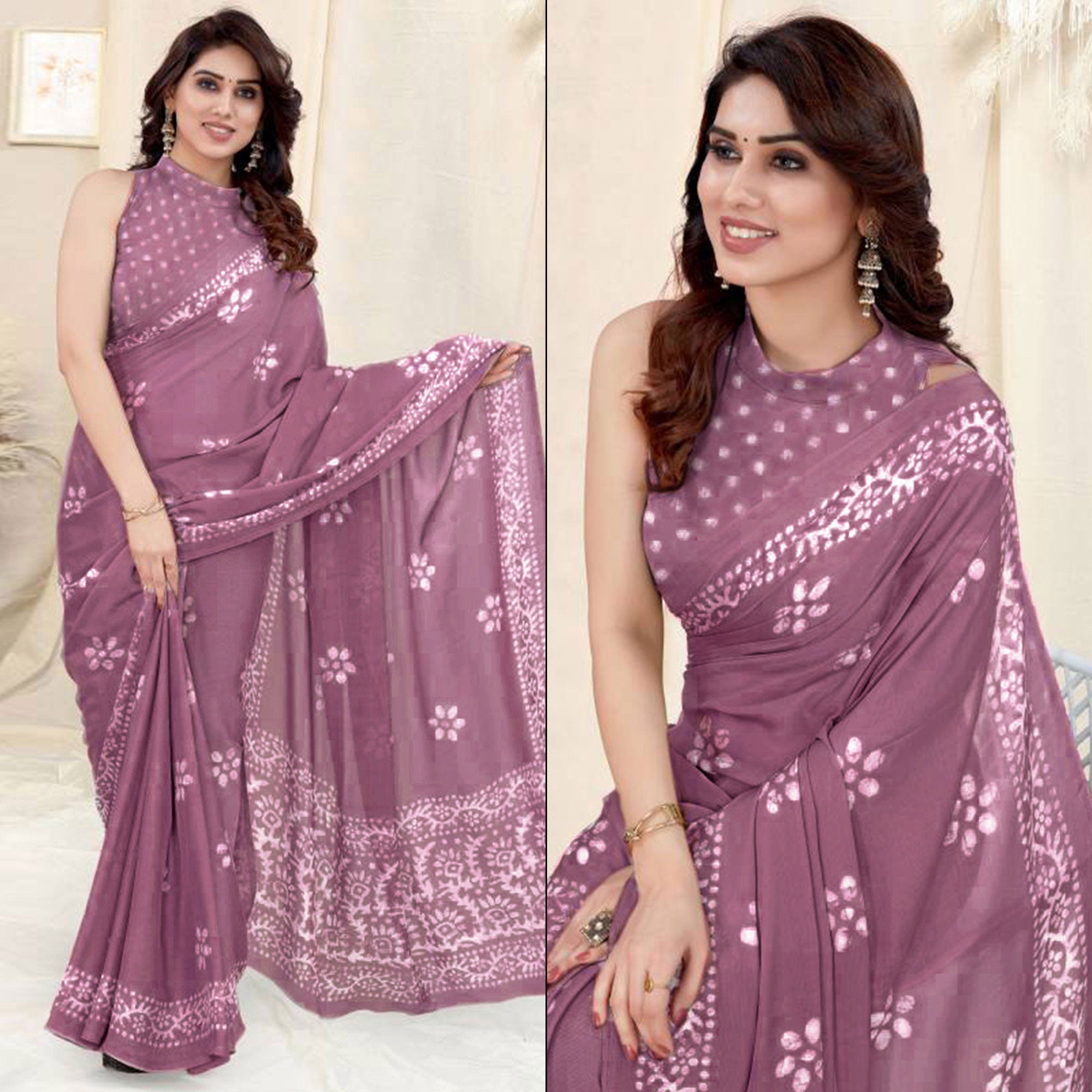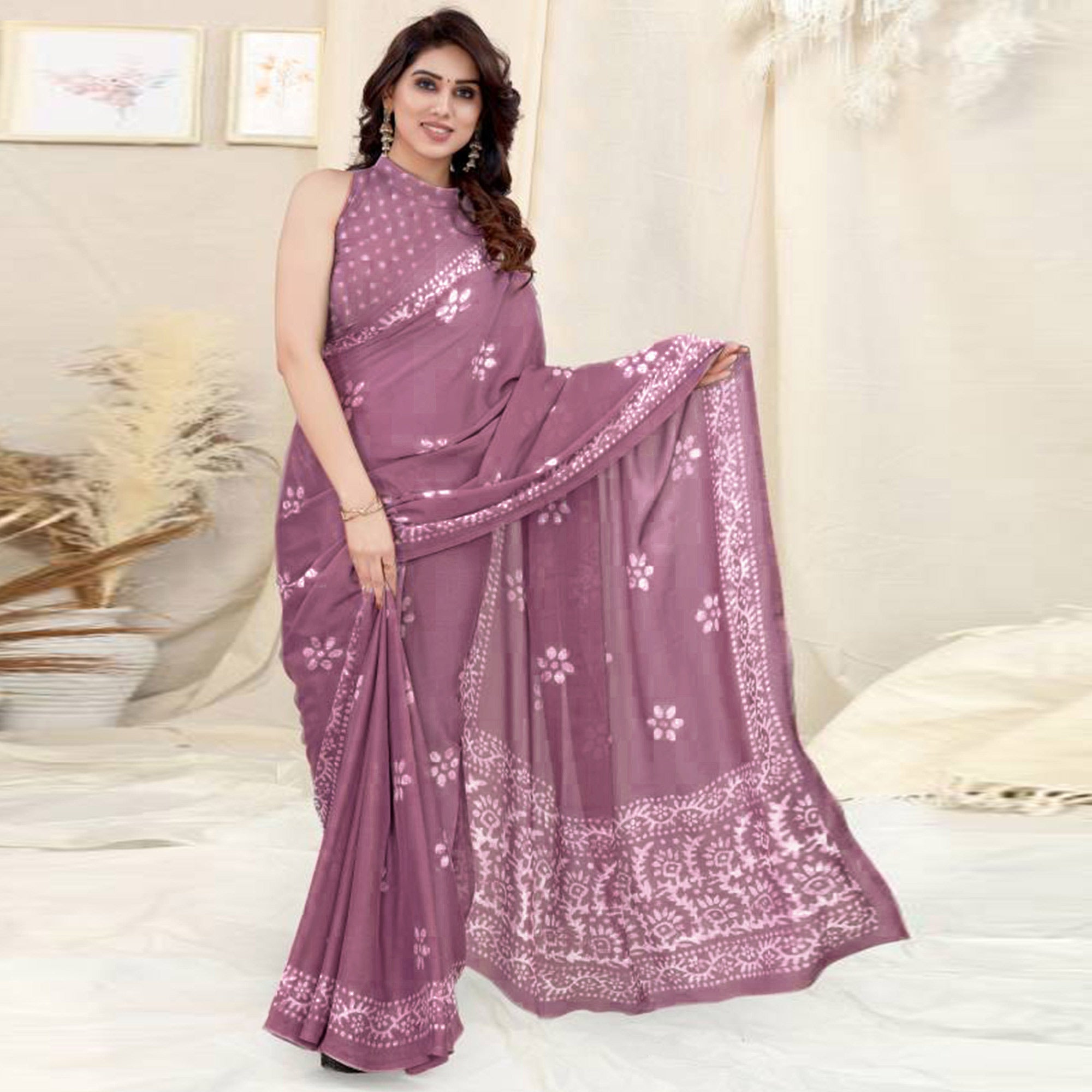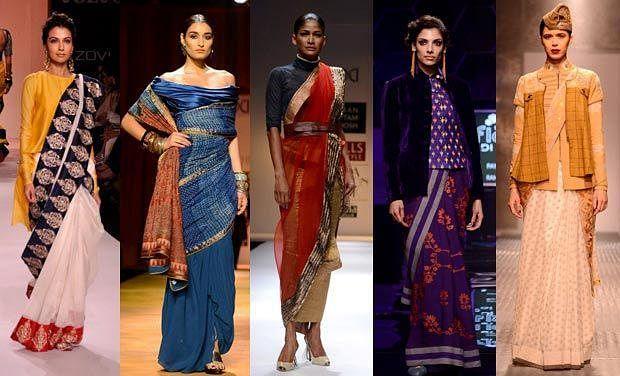The city of Lucknow is synonymous with royalty, culture and many religions . Its a melting pot of the cultural heritage that blends zealously with modern developments. The city however, has kept intact its golden Luckhnawi Tehzeeb, a fact that makes one feel proud and humble!
LUCKNOW is not just home to some amazing Nawabi fashion culture and shayari. Its hidden crafts include much more beyond the obvious CHIKANKARI. One of the most beautiful embellishment and ornamentation art- THE MUKAISH BADLA also find their origins here.
This type of embroidery has been around since the Rig Veda era, and it went onto prosper during the Mughal period. Initially real silver and gold was used to make these threads, but now real raw material is not used. Craftsmen have different ways of polishing the thread to make it appear brighter. BADLA is also used at times to give the appearance of sequin work but it requires much more intricate artisanship.

Mukaish, an almost dying craft of Lucknow, is age-old embroidery where thin strips of metallic wire are inserted into the fabric and then twisted to create metallic embroidery. Very few karigars make exclusive Mukaish sarees as it is mostly done to highlight or adorn heavy Chikankari work. Over time, Chikankari travelled far and wide but Mukaish remained in Lucknow’s narrow lanes. The karigars of this craft, also known as Badla in Gujarat and Maharashtra, are a dying breed.

Considering the amount of time that goes into making Mukaish, which is an expensive and labour intensive craft, there are just a handful of craftsmen left in Lucknow, most of them being Muslims.
HOW THE WORK IS DONE
There is a three step procedure to this beautiful art as explained below-
CHAPAAYI

Firstly, the motif or pattern to be embroidered is printed on the fabric (usually a pure chiffon or georgette) with a mix of ‘neel’ powder and gum. This could be transferred from a perforated paper stencil or block printed.
TAKAAYI
Takaayi can be done in two ways- FARDI AND KAMDANI

Fardi, literally translating into "dots", is the most basic yet amazing type of Mukaish work. Dots are stitched in different sizes and patterns. The ‘hazaar batti’ or the thousand dots design in Fardi is characteristic of Lucknow. ‘Tikki’ (flat sequins) and ‘challa’ (rings) are used vastly to create the patterns. Size of the dot depends on the width of the wire and the pricing of the work depends on the size of these dots, the most intricate or small nes being most expensive. Fardi ka kaam is usually done by women from their homes.
In Kamdani, the wire attached to a small length of thread is pulled through the fabric with a needle, beautifully working into motifs. This is also referred to as ‘fancy kaam’. Kamdani is fast becoming a rarity and most of the craftsmen are elderly men.
GHUTAAYI

Once the embroidery work is complete, the fabric is flattened and brightened using a glass bottle or a cowerie shell. Its laid flat on a cloth and rubbed till it shines!

Usually heavy chikan-and-mukaish-work georgette sarees and lehengas are available in white and can be dyed in the color of one’s choice. Some designers such as NIKI MAHAJAN are also experimenting with different textile weaves and combining it with Mukaish work, sans Chikankari. Kurtis and dupattas, anarkalis and even dresses are embroidered with mukaish badla. Lakhnawi products are exported the world over and are a must for the tourist who visits the city.
There are some beautiful BADLA work ethnic wear such as the following Palazzo and long Tan kurta at PEACHMODE too that you can shop to look royal and classy.

HOW TO WEAR
‘Less is more’ is the key to make your Badla- embedded outfit stand apart. With all the glitter and sparkle effect, one does not need much. A nice and sober pair of earrings or a large cocktail ring on one hand is the best way to finish off the look in style.
Bridal wear is what it is mainly used in, but depending on the occasion, one can get less embroidery done on a simple kurta for a more sober and understated look.
GRAVE CONDITION OF ARTISTS
The artisans are the real treasure of Indian as their work is unparalleled and authentic. No machine work or FAST fashion can replace the grandeur and regality that they can create on clothing. However, their plight is pitiable and their population is dwindling. The government must pay attention this dying art as it is still one of the most beautiful gifts that our country has given to world fashion.

